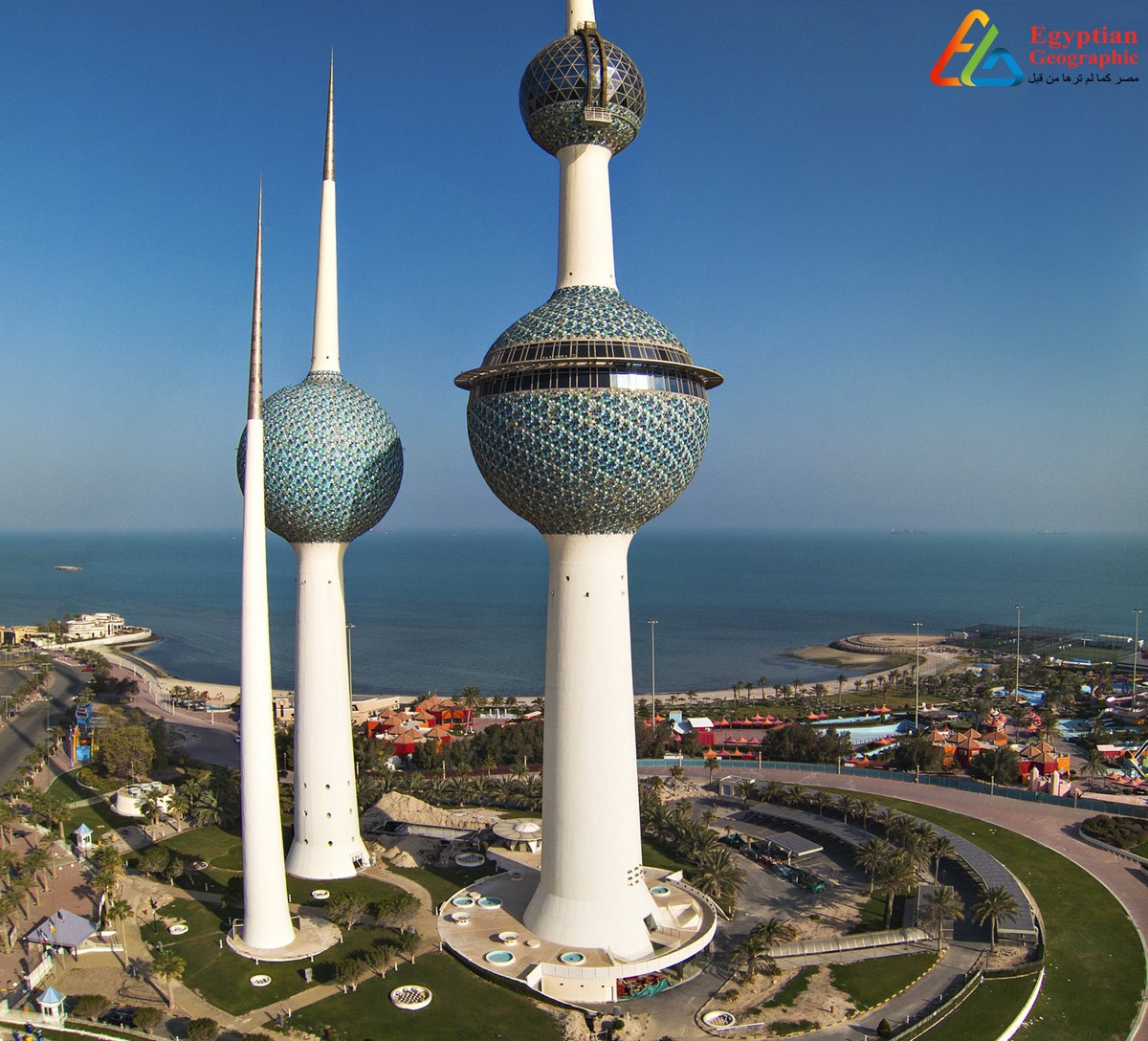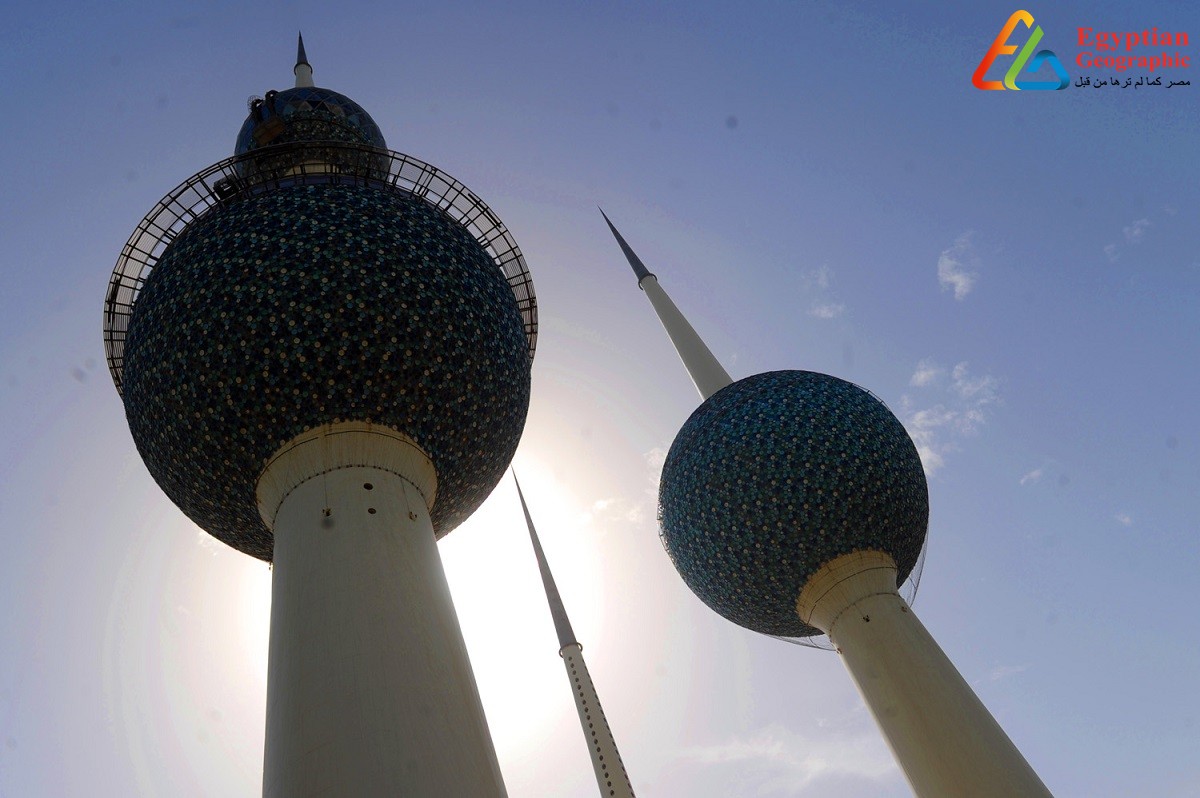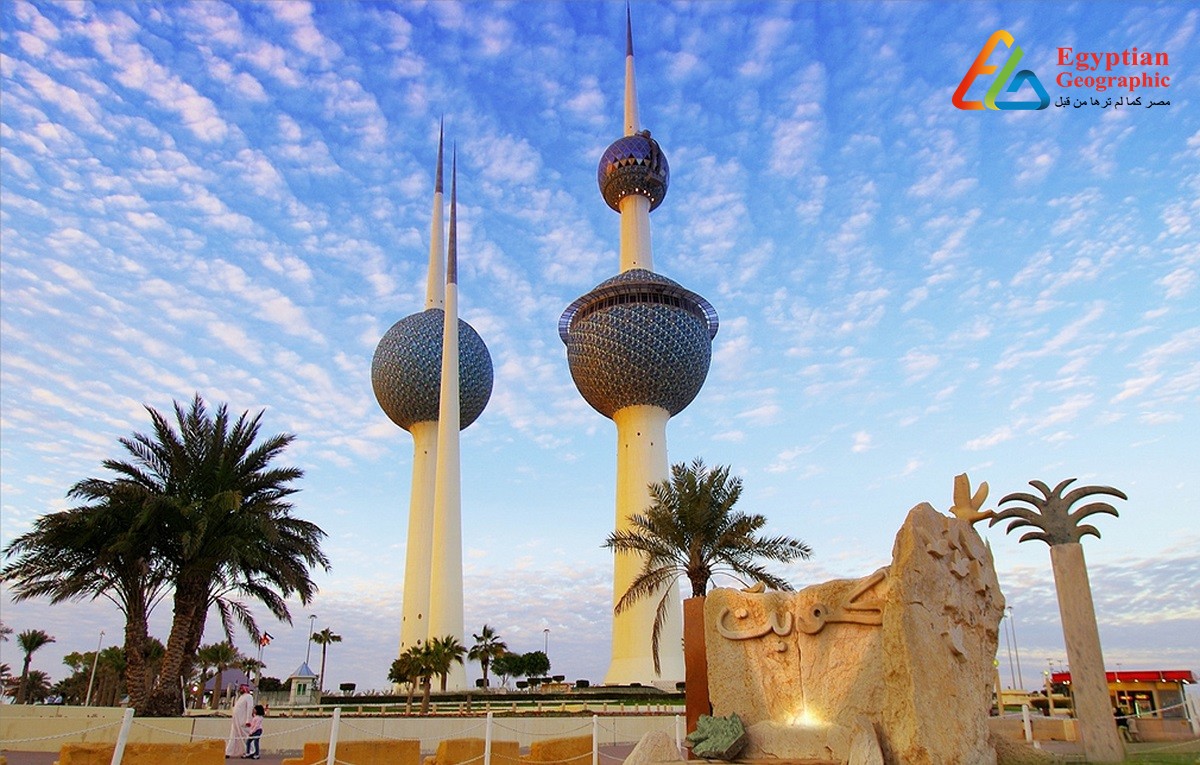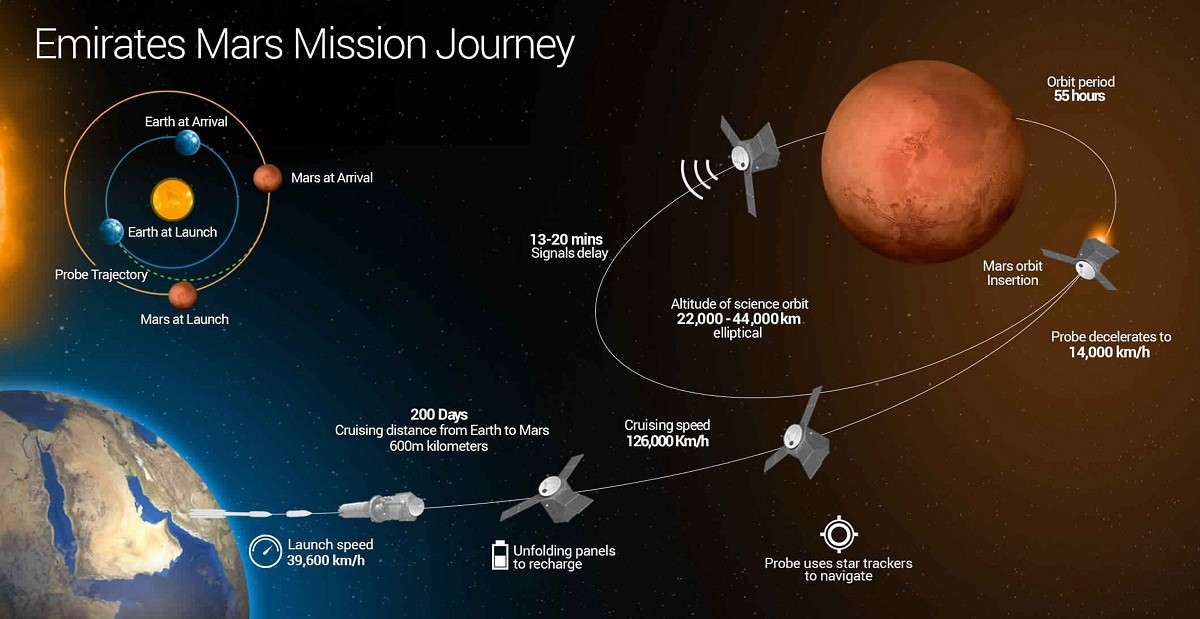With a design that expresses the Bedouin heritage supported the incense burner, sprinkler and kohl, the Swedish engineering office Lindstrom oversaw the planning of the Kuwait Towers, which began its idea in 1963, but stopped for five years, before it reappeared in 1968, and also the Yugoslavian Energy Project started building it in 1975. And he graduated to light on March 1, 1979.
The Kuwait Towers are one amongst the foremost prominent tourist and cultural landmarks in Kuwait, which are three high-rise towers located on the shore of the Arabian Gulf, specifically in a locality called Ras Agouza within the Kuwaiti capital. the thought of establishing them goes back to Sheikh Jaber Al-Ahmad Al-Sabah, when the state needed to make huge water tanks to switch reservoirs. Ancient iron.

Kuwait Towers are three columns that are in keeping with Kuwait's heritage landmarks. the most column, which is 187 meters above water level, and also the middle, which is 147 meters long, is designated for storing water. Blue balls are harmonical with the colour of the ocean and also the sky. Chinese dishes fabricated from iron coated in eight bright colors.

As for the smaller tower, which is 113 meters high, it doesn't contain any balls, and was built to manage the delivery of electricity to the encompassing area and its environs, additionally to lighting the opposite two towers through powerful searchlights installed in it, and their number reaches about 100 searchlights, and its diameter at the bottom is 12 meters.

During the Iraqi invasion of Kuwait in 1990, the towers were vandalized, destroyed and looted, and therefore the percentage of destruction reached 70%, which led to most of the technical equipment and equipment being destroyed, additionally to breaking glass, burning some floors and cutting electricity cables and wires, and after the liberation of Kuwait, the Tourism Projects Company formed a committee to assess the damage and restore facilities Back in place, to be inaugurated on the 26th of December 1992.
































































Egyptian Site & magazine